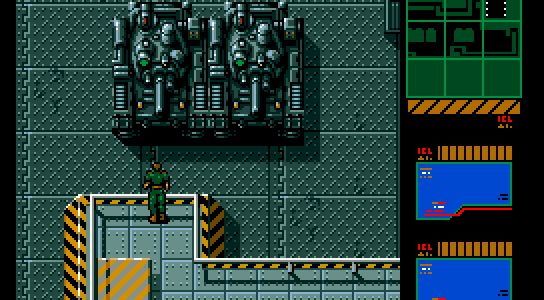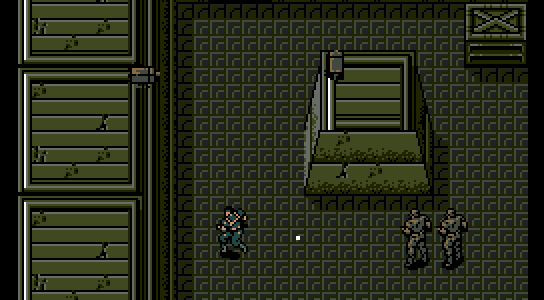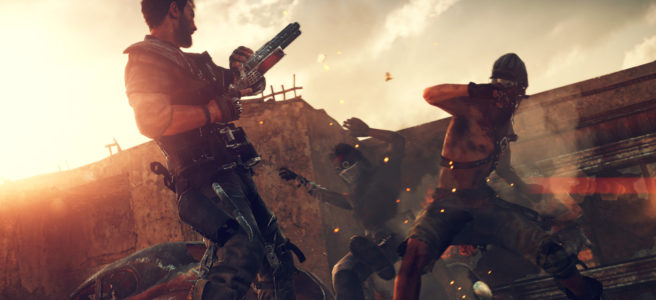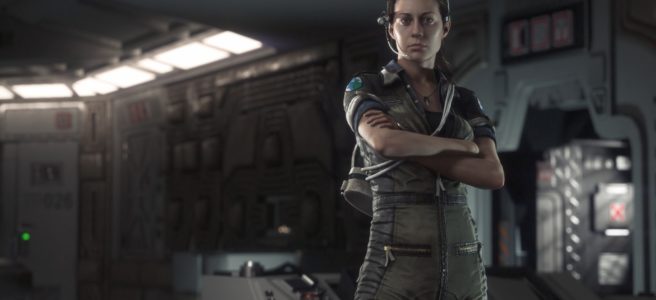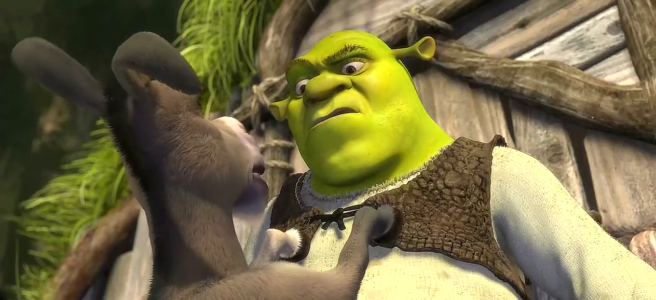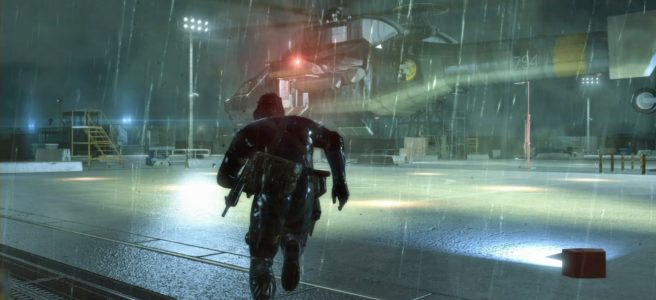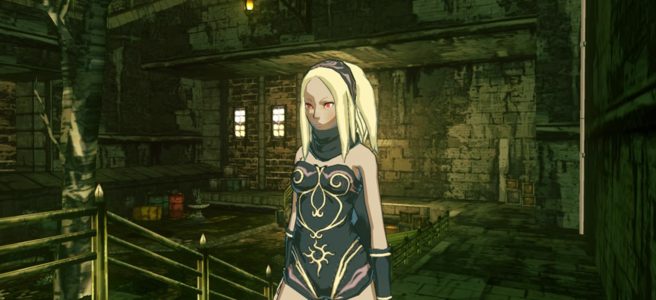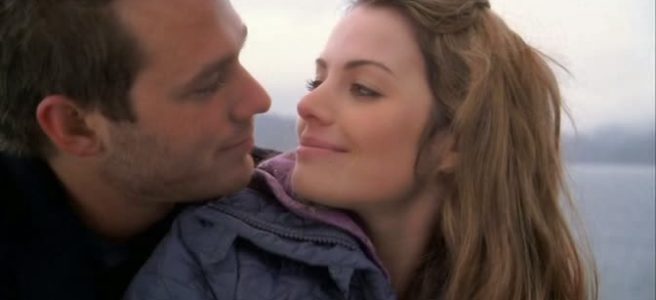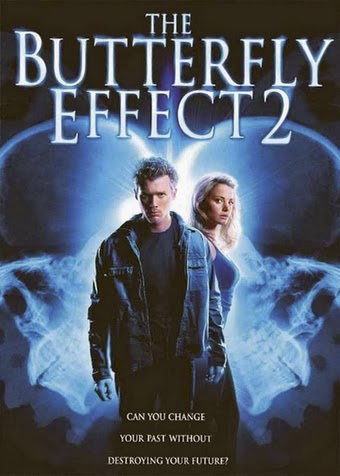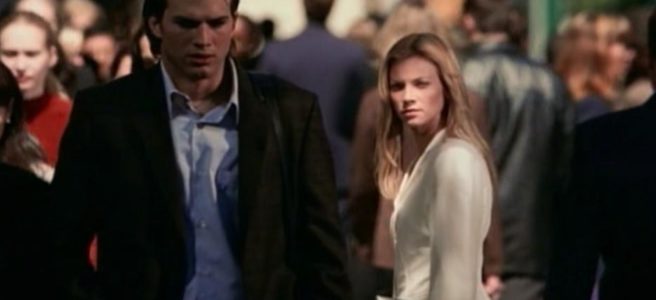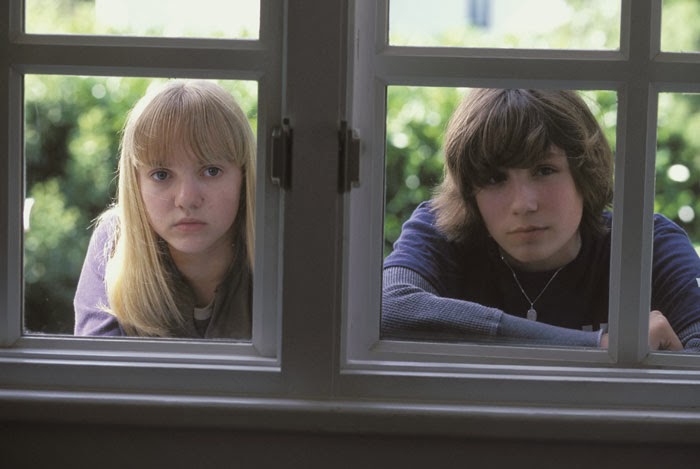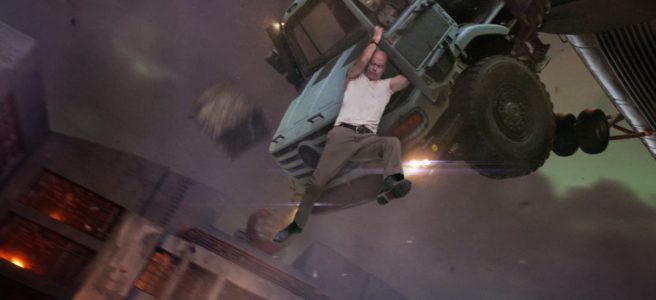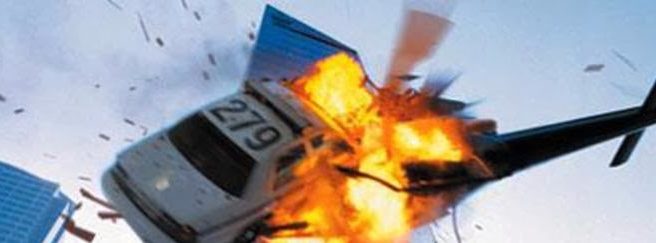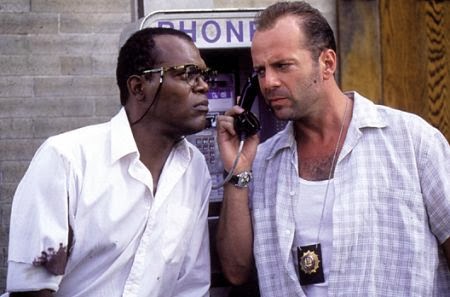Welcome back to the Metal Gear retrospective! In this entry we’re going to cover the second canonical game in the franchise, 1990’s Metal Gear 2: Solid Snake. How would Kojima build upon the foundation he set up in 1987’s Metal Gear? Read on to find out…
(Similarly to the first game in the series, I will be reviewing Metal Gear 2: Solid Snake based on the HD Edition re-release on PS3 on Original difficulty. Also, unlike Metal Gear, which I had gotten about 30 minutes into on a couple occasions, I went into this game completely blind and relied heavily on a guide to complete it.)
DEVELOPMENT
The NES port of Metal Gear ended up becoming a big success for Konami, despite being an inferior bastardization of the MSX version. As a result, Konami ordered the creation of a NES-only sequel, Metal Gear 2: Snake’s Revenge, without the knowledge of series creator Hideo Kojima, who had been busy stretching his storytelling and directing talents on the cult classic Snatcher series. In fact, Kojima didn’t even know that Snake’s Revenge existed until a fateful train ride where he met a member of the game’s development staff. In the meeting, the developer asked Kojima to make a “true” Metal Gear sequel. While he hadn’t planned on making a sequel to Metal Gear, by the end of the train ride Kojima had come up with the game’s storyline and got the go-ahead from Konami. As a result, Solid Snake was considered the Japanese sequel on MSX2 and Snake’s Revenge was considered the North American sequel on NES (similarly to how Super Mario Bros: The Lost Levels was the Japanese Super Mario Bros. 2). In fact, the game would not see an official release in North America until 2006 when it was included in Metal Gear Solid 3: Subsistence.
PLOT SUMMARY
The year is 1999. The Cold War is drawing to a close, and nations seem to be moving towards universal nuclear disarmament. However, the mercenary nation of Zanzibar Land, begin attacking weapon disposal sites and take them for themselves in order to become the world’s greatest nuclear power. Meanwhile, an energy crisis grips the world as oil stocks plummet. At the height of the crisis, a scientist named Dr. Kio Marv creates an algae, OILIX, which synthesizes petroleum-grade fuel efficiently. Before he can present these findings to the international community though, he is kidnapped by agents from Zanzibar Land and held hostage. As a result, Zanzibar holds the world’s fuel supplies and its nuclear weapons, making it the greatest threat to international security ever known.
With the fate of the world in the balance, a PTSD-suffering Solid Snake is forced out of retirement to save the world by the new leader of FOXHOUND, Colonel Campbell. Infiltrating the Zanzibar Land complexes in search of Kio Marv, Snake is contacted by CIA agent Holly White who offers to help him during the mission. He follows Kio Marv’s transmitter signal, but is ambushed by a man calling himself “Black Ninja”. Snake defeats him, but is shocked to discover that Black Ninja is Kyle Schneider, the leader of the resistance against Outer Heaven 4 years earlier. Schneider reveals that NATO bombed Outer Heaven after Snake’s mission was complete, causing staggering amounts of collateral damage which killed many resistance members indiscriminately. Schneider himself was captured and used as a research guinea pig for NASA. He reveals that he was saved by the leader of Zanzibar Land and tells Snake to “follow the green beret” before succumbing to his wounds.
Following Schneider’s dying advice, Snake follows a man in a green beret into the jungle to a prison cell. The cell is empty, but Snake hears someone knocking from the next room over. Snake translates the tap code and discovers Dr. Drago Pettrovich Madnar is the one in the next cell. Madnar reveals that he has been captured to construct a new Metal Gear for Zanzibar Land, Metal Gear D. He also reveals that the leader of Zanzibar Land is none other than Big Boss. Madnar advises Snake not to worry about him and to search for Kio Marv as quickly as he can.
Snake then tries to make his way towards Zanzibar tower. In the process, he encounters a speedy mercenary named Running Man, who tries to kill Snake with poisonous gas as he stays out of Snake’s reach. However, Snake outsmarts him and places landmines in his path, killing him. Snake then heads towards the Zanzibar tower after acquiring Stinger Missiles, encountering and destroying a Hind D along the way. Snake then has to rescue Holly, who is captured by Zanzibar Land forces, but she tells him that there is a carrier pigeon at the top of the tower that has info on Marv’s whereabouts. After defeating a mercenary named Red Blaster, Snake locates the pigeon which has Marv’s radio frequency written on a note. Unfortunately, Marv doesn’t speak english, so Madnar suggests that Snake search for Czechoslovakian state security agent, Gustava Heffner, who was Marv’s bodyguard and is undercover in the facility.
Snake manages to locate Gustava, who is posing as an enemy soldier. The pair descend into the sewers and manage to rescue Dr. Madnar as they make their way to Marv’s cell. Madnar stops for a quick bathroom break while Gustava tells Snake about her past in Olympic figure skating and how she wanted to defect to the west to be with her fiance, Frank Hunter, but was denied asylum. When Madnar returns, the trio continue on their way and exit the sewers. However, when they attempt to cross a bridge to reach the detention camp, Gustava is mortally wounded when Metal Gear D, piloted by Gray Fox, suddenly shows up and destroys the bridge. Madnar is captured again and a dying Gustava gives Snake her brooch for unexplained reasons as Gray Fox gives Snake one last chance to turn around with his life.
Snake manages to get ahold of a hang glider to cross the destroyed bridge and battles a series of Zanzibar Land mercenaries, the Four Horsemen, Jungle Evil and Night Fright. Eventually, Snake is able to make his way into the detention facility and reach Dr. Madnar and Dr. Marv’s cell. However, he arrives too late – Marv has succumbed to torture and died. Holly then calls Snake and warns him that Madnar was not captured by Zanzibar Land, he joined them willingly. With the truth out, Madnar admits to accidentally killing Dr. Marv and ordering Gray Fox to attack them at the bridge. Madnar then attacks Snake and tries to strangle him, but Snake wounds him with remote controlled missiles. Snake manages to open a locker in the cell by using Gustava’s brooch as a key and retrieves the OILIX formula.
Before he can leave with the formula, Snake falls down a trap door where he confronts Gray Fox in Metal Gear D. Gray Fox tries to kill Snake, but Snake destroys Metal Gear by blowing its weakly-armoured legs up with grenades. However, Snake is forced to discard all his weapons as the explosion lights them on fire. Fox then leads Snake into a room ringed by land mines, where Snake discovers that Gray Fox is Frank Hunter, the man who was engaged to Gustava. Snake and Gray Fox then engage in a fist fight, with Snake beating Fox to death, with his last words of comfort being that Fox would get to see Gustava again on the other side and that they could finally be united.
Snake then is confronted by Big Boss. Snake tells his former commander that he intends to kill him to rid himself of the nightmares he has suffered due to the operation in Outer Heaven. Big Boss says that he and Snake have tasted battle and can’t go back to normal life anymore. The only way they can feel alive is on the battlefield. He and Snake would face one another, with the victor being fated to fight while the loser will finally find peace. Big Boss then pursues Snake, but Snake manages to create an improvised flamethrower using a lighter and aerosol spray can, burning Big Boss alive as he screams in rage. Snake and Holly then fight their way out of Zanzibar Land and to their extraction point. Snake and Holly hand over the OILIX formula to the government, and the world celebrates the end of the energy crisis. However, Snake claims that his fight is over and retires for a second time, disappearing without a trace…
GAMEPLAY & DESIGN
As soon as you boot up Metal Gear 2: Solid Snake, it’s easy to tell that the game is a big leap forward from the original Metal Gear. For one thing, the game has an awesome opening soundtrack and cinematic for a game from this period, which shows off how much Kojima’s storytelling prowess has improved between Metal Gear and Snatcher. The opening cinematic hypes up Metal Gear D really well and actually lays down a rather interesting and (at the time) relevant backstory which contextualizes the game’s story quite well. As for the game itself, the graphics have significantly improved since Metal Gear, despite having the exact same hardware limitations. I felt that Snake looked really terrible in Metal Gear, with his character model being noticeably less-detailed than the enemies around him. However, in Solid Snake, he looks quite well-defined and even has a turning animation which is an unexpected extra attention to detail. If you need a better illustration of the improvements in Solid Snake, it’s kind of like the graphical difference between Super Mario Bros. and Super Mario Bros. 3.
After this initial impression fades away though, the game has other aspects which are straight-up improvements on the formula established in the first game. For one thing, the silly respawning items seem to have been fixed. They do respawn occasionally when you leave an area , but you can’t farm them with nearly as much ease as you could in the first game. Considering that this exploit in Metal Gear was likely a hardware limitation, it’s impressive that they were able to get rid of it here, especially since Solid Snake is such a significantly larger and more ambitious game. The game also has a radar, which shows you enemies within all adjacent screens (basically giving you a view of 8 whole screens, in addition to the one you occupy). This is a very impressive addition which makes sneaking all the more strategic and potentially more difficult. Alerts and guards are persistent unless you enter certain locked rooms, meaning that you can’t just sprint to the next screen to escape an alert anymore, and enemies won’t instantly respawn as soon as you walk back onto their screen. You can also make noise by walking on certain types of flooring, or intentionally lure guards by punching walls, which is a great strategic option and makes the minute-to-minute sneaking more interesting.
Oh, and they’ve added a crawling mechanic! SCORE.
These additions to Solid Snake make it a more engaging stealth game than the original Metal Gear, but they also make it quite a bit more challenging. Having persistent alert phases makes escape quite difficult, especially since enemies will pursue you relentlessly. Worse, enemies spawn from exit points and your radar gets jammed during alerts. As a result, you can be a step away from freedom when an enemy will appear out of nowhere and get the whole alert going all over again. At times, getting through an alert can feel like a matter of dumb luck. The lack of gradient to an alert phase is also an annoyance – you can set up an ambush for an enemy, but if he suddenly turns at the last second then the alert is instant and everyone in the area is going to come after you. Not having any warning on when they might change direction makes this kind of approach dangerous. There is an exploit to quickly and safely end an alert phase though, which I used copiously throughout my playtime – when spotted, immediately enter a small room and then stand just off from the entrance. Enemies will enter single file every few seconds, but if you just spam the punch button you will catch them all off guard and not even get spotted.
That said, guards are much smarter than they were in Metal Gear. For one thing, they now have vision cones rather than vision lines, and if they’re on the same screen as Snake, then they can potentially spot you from the opposite side of the screen. This makes stealth much more skillful and difficult to pull off successfully. When spotted, they move far less erratically than before as well, usually heading straight towards you without running into pathfinding issues. They also have some tricks in certain areas, such as guards who can turn off the lights so you can’t see where you’re going without night vision goggles, or the guards who hide in a room full of dummies!
The game does have some other small touches which improve on the systems from Metal Gear. For one thing, gas rooms are far more infrequent and are less infuriating with the addition of the O2 meter. This means that you get a small grace period before your health begins to drain, making these sections much funner to go through. The game will also fully heal you after you finish a boss battle which is nice, and it seems that certain boss battles have replaced the “class” system from Metal Gear, providing you with equipment and health bar upgrades. This is a better system in my mind, since most POWs were hidden away in elusive places, whereas adding rewards for narrative completion is more sensible and easy to design encounters around. The gameplay is also a little more diverse, with some puzzle-solving, a section where you have to follow a soldier without getting detected, and a room full of sleeping guards that you have to be careful not to wake up. These additions help to make the minute-to-minute gameplay just a little more interesting.
Even some of the more annoying aspects of Metal Gear which have carried over to Solid Snake have been refined. The checkpoint system is basically identical to the first game, with it only activating when entering a new area. However, this game has far more access to new areas, so checkpoints seem to be much more frequent and death results in much less lost gameplay in my experience. Solid Snake also retains the crappy key card system from the first game, but with a welcome change: after acquiring a certain number of key cards, you can exchange them for a red, blue and/or a green key card which has the functionalities of three normal cards in one. While this is a welcome improvement, it suggests to me that Kojima knew that key card swapping was an inherent problem with the game, but decided to keep them in anyway for design convenience. If this is the case, then it rubs me the wrong way… especially because it’s basically the only reason why backtracking exists in this game (but I’ll get to that soon enough).
It’s also worth pointing out that Solid Snake might be the silliest Metal Gear game in the whole franchise. Here are just a few selected examples:
- At one point in the game, Snake has to comically chase a carrier pigeon around the roof.
- You can play a recording of the Zanzibar Land national anthem to cause enemy soldiers to salute you instead of attacking.
- There’s a room full of dummies that look like enemy soldiers, just to make you nearly shit your pants when you first walk in.
- You have to hatch an owl egg and then getting it to hoot in order to convince an idiotic guard that it’s night time (somehow).
- There’s a room full of vicious rats which can kill Snake with ease (somehow).
- Oh, and you defeat Big Boss with a slapstick improvised weapon.
The game also has some fourth wall-breaking moments, such as requiring you to check the game manual to decode a tap code or to figure out the frequencies of the various support characters (although this was likely included to give a middle finger to pirates, since you have almost no direction on where to go or what to do without these support characters). The silliness makes Solid Snake very funny at times and definitely had me laughing out loud on more than one occasion.
Fans of the franchise would also be interested to hear that Kojima directly ripped off some elements of Solid Snake and re-purposed them for Metal Gear Solid, including some of that game’s most iconic moments. A small list of examples (not including moments that I would deem “homages” to Solid Snake) includes checking the back of the box for a radio frequency, the elevator ambush, a comically-long stair run, temperature-based keys and even tailing a woman disguised as a soldier into the ladies’ washroom. For fans who have never played Solid Snake before, it can be quite interesting to see what parts Kojima re-purposed, although it does slightly diminish their uniqueness.
I feel it’s also worth pointing out that Solid Snake is a much lengthier game than Metal Gear. This is mainly due to the more refined and engaging gameplay, not to mention that the mission objectives in general just result in a longer, more enjoyable experience. With a detailed guide, the game took me about 4 and a half hours to beat, although with continues I imagine that it’s closer to the 5 or 6 hour mark.
Solid Snake‘s one huge negative though is the unforgivably ridiculous amount of backtracking. Most egregiously, you have to backtrack all the way to the start of the game at least 3 or 4 times in order to finish the game, which just reeks of attempting to pad out the runtime. You also don’t usually have a good idea of where to go if you don’t have a guide, meaning that you might backtrack to an area just trying to figure out what the hell you’re supposed to do next. Oh and you also have to backtrack through a really annoying swamp maze on a couple different occasions. Basically, there’s a narrow maze that you have to go through which is hidden underneath the surface of a swamp. This would be a minor annoyance if it was just a 1-screen-maze, but this swamp stretches across 7 or 8 screens. Without a map, you’re going to be sinking as you trial-and-error your way through and then try to remember the exact pattern the next few times you are forced through this swamp again. Hardcore retro gamers: is it really so bad that modern games will let us know where we’re supposed to go? Is wandering around in directionless frustration worth the small satisfaction that comes from accidentally stumbling upon a solution to the problem? Frustrating design decisions like this just turn the very act of playing into a chore.
The game’s punching mechanics are also a bit of a negative point. I don’t think that they’re much different than they were in Metal Gear, but the much harsher punishment for detection makes their imprecise nature a bigger problem. Specifically, the direction you punch in is a major factor in your success or failure. The game is clearly designed around having Snake punch downwards or to the sides and his punches in these directions all have a surprisingly long reach. However, when punching upwards, Snake’s punches all of a sudden have much shorter reach, meaning that you have to poke out further to hit enemies, meaning that you are likely to get spotted while trying to set up an ambush. Considering that most of the stealth gameplay revolves around hiding around a corner and bashing enemies when they get close, this is a real frustration and eventually I was just avoiding having to punch enemies above me on the screen entirely. If I needed to take them out, then it feels like the silenced pistol is my only viable option.
Luckily, the bosses in the game are much more interesting and challenging than they were in Metal Gear. Most could be downed with a half dozen bullets, but the bosses in Solid Snake have more health, recognizable attack patterns and some sort of exploitable gameplay twist that you can take advantage of to pull through. Most of these bosses were quite fun to fight, although none of them were all that challenging (I have heard that many people find Gray Fox very hard, but I beat him on my first attempt after taking a negligible amount of damage). I think my favourite fights were the battle with Black Ninja, Running Man, the Four Horsemen, Metal Gear D and Dr. Madnar (just because he made me laugh out loud).
The Hind D is the only boss battle which left me very frustrated. Once you understand its movement and attack pattern, which always moves in the exact same way, avoiding damage is laughably easy. However, the method to destroy it is the problem. First of all, after encountering it you have to backtrack to the start of the game to acquire Stinger Missiles, which instantly makes it an annoyance. Secondly, you only get 6 Stinger Missiles, and you need 4 to connect to actually destroy it. Thirdly, the method to destroy it isn’t really well explained and can lead to some bafflement as you wonder whether or not you did any damage. Basically, you get a crosshair on the radar which you need to line up with the Hind’s radar blip to score a hit. I thought that I had to center this crosshair over the Hind to cause damage, which would have made more sense, but the actual way to hit it is to get the Hind inside of the edge of the crosshairs and then fire so that the Hind runs into the rocket. It’s a system that isn’t well explained and made me just committing in-game suicide a few times to avoid having to run all the way back to the beginning of the game to get more ammo to try again. That said, by my 3rd try, I beat it while only using 4 rockets and not getting hit once, so you can get a handle on it… it’s just the “getting a handle on it” that’s the annoying part.
STORY & CHARACTER ANALYSIS
As I mentioned in the previous section, Solid Snake opens with a rather interesting and elaborate backstory cinematic touching on such relevant topics from the time as the end of the Cold War and energy supply concerns. The game’s opening area also suggests a much more futuristic design than the first game, with Zanzibar Land’s trucks appearing to be from some sort of sci-fi movie rather than a 90s-era military tale. These sorts of design decisions quite subtly suggest an advanced, near-future society unlike our own. Between the opening cinematic and the design elements that appear in the opening moments of the game, Solid Snake sketches out a rather compelling setting which is still engaging 15 years after its release, and must have been mind-blowing when it first dropped.
Due to the much more fleshed-out narrative though, Solid Snake retcons and twists the relatively simple Metal Gear storyline almost immediately. For one thing, Snake having PTSD is never really even hinted at as a factor in Metal Gear, as it seems like he didn’t really face that many true horrors. The very first boss fight hammers the retcons and twists home as well, as the Black Ninja ends up being former ally Kyle Schneider. While Big Boss was obviously just meant to be the cackling bad guy in Metal Gear, Schneider paints a far more nuanced and sympathetic view of him which ends up being more in line with his portrayal in later games in the franchise. In addition, having a former ally (who was believed to have been killed) switch sides because of a callous bombing action (which was never suggested in Metal Gear) makes the events of the first game seem much darker.
Having Gray Fox as a villain is also a clear retcon because, if he was working for Big Boss before, then why would he have been captured in Metal Gear and then have Snake come in to complete his mission?* The only reasonable explanation I can come up with is that it’s possible that he didn’t realize that Big Boss was a traitor until Snake exposed him, at which point he he decided to stick with his commanding officer. In any case, it’s obviously meant to turn the narrative of Metal Gear on its head (much like the Kyle Schneider revelation), which is fine because Gray Fox makes for a great villain. He is clearly modeled to be the “anti-Snake” archetype, similar to other villains in the franchise, such as Liquid Snake in Metal Gear Solid, Python in Portable Ops or Skullface in The Phantom Pain. Gray Fox’s dying monologue is also a fantastic moment, nearly as impactful as the acclaimed Psycho Mantis and Sniper Wolf death monologues in Metal Gear Solid, although the shorter length and lack of voice acting are the only things holding it back.
Solid Snake also features some much more interesting characters than the first game. Snake himself actually has a bit more personality this time around, and his support staff interact with him far more often. The addition of radio pictures helps personalize everyone just a little more, since it actually puts a face to the various people dispensing information at you. While Holly White is an unfortunately boring and poorly defined generic love interest, I felt that Gustava Heffner was a very cool character with an interesting and sad backstory. In fact, despite her limited screentime in the game, I was legitimately heartbroken when Gustava was accidentally killed by her former lover. I also felt a little better for Gray Fox when he was dying, knowing that he and Gustava were finally going to be able to reunite in the afterlife, where borders and politics can no longer separate them. Fleshing out Big Boss was also a great idea, although I wish that they had done so earlier in the game – he doesn’t really get a chance to explain his ideology until the end of the game. In some ways, he still comes across as a cackling super villain, but I found the endorsements of the children in Zanzibar Land especially to soften his evil veneer in my eyes (even if he does plan on raising them as soldiers… but so what, he’s still helping people no one else cares for).
Oddly enough, some elements of the game’s story seem to have been shoved to the wayside in subsequent Metal Gear games. Obviously you can’t put Solid Snake to fault for this, but since most fans are going to come to them after playing the other entries in the series, it’s worth noting. For example, global nuclear disarmament is a notion which seems to disappear entirely by the time that Metal Gear Solid was released. Metal Gear Solid hints very subtly at disarmament talks, but it seems like Solid Snake‘s insistence that they were in a world on the brink peace is actually just a pipe dream. It seems like this idealistic notion is just thrown out the window or handwaved away as actually being far more simple than we were led to believe, with small-scale nuclear disarmament. There’s also no mention of OILIX in subsequent Metal Gear games, despite it being hyped as the solution to the game’s sudden energy crisis. It’s also definitely worth mentioning that the showdown between Solid Snake and Big Boss is a little anti-climactic, especially in relation to how it is hyped up as this epic clash in subsequent Metal Gear games. For people who come to the this entry after playing the newer Metal Gear games, this is a revelation which will likely disappoint fans of the 20th century’s greatest soldier.
That said, Solid Snake is still well worth experiencing, as it makes some plot elements from Metal Gear Solid much stronger, particularly Snake and Gray Fox’s relationship. I can now truly appreciate and understand that Gray Fox’s forced resurrection is basically torture and makes his madness throughout Metal Gear Solid much more understandable (that said, it also makes his role in Portable Ops unforgivable, but we’ll get to that another time…). It’s also very cool seeing recurring characters show up here, such as Colonel Campbell and “Master” Kazuhira Miller. Of course, the narrative is still rather shallow, and is basically just an elaborate and interesting b-level action story, but it is quite engaging for what it is (and considerably better than many games of the time).
Metal Gear 2: Solid Snake is a fantastic 8-bit experience that I heartily recommend trying out. My only real complaints are that enemies spot you a little bit too easily, the backtracking required is absolutely ridiculous and the game’s puzzles can be rather obtuse. If you haven’t played it, then this common summary turned out to be quite apt: it’s like playing Metal Gear Solid in 2D… or, more accurately, playing Metal Gear Solid is like playing a more refined, 3D version of Metal Gear 2: Solid Snake. This game was definitely way ahead of its time and is worth checking out if you have any interest in the 8-bit Metal Gear games.
8.5/10
